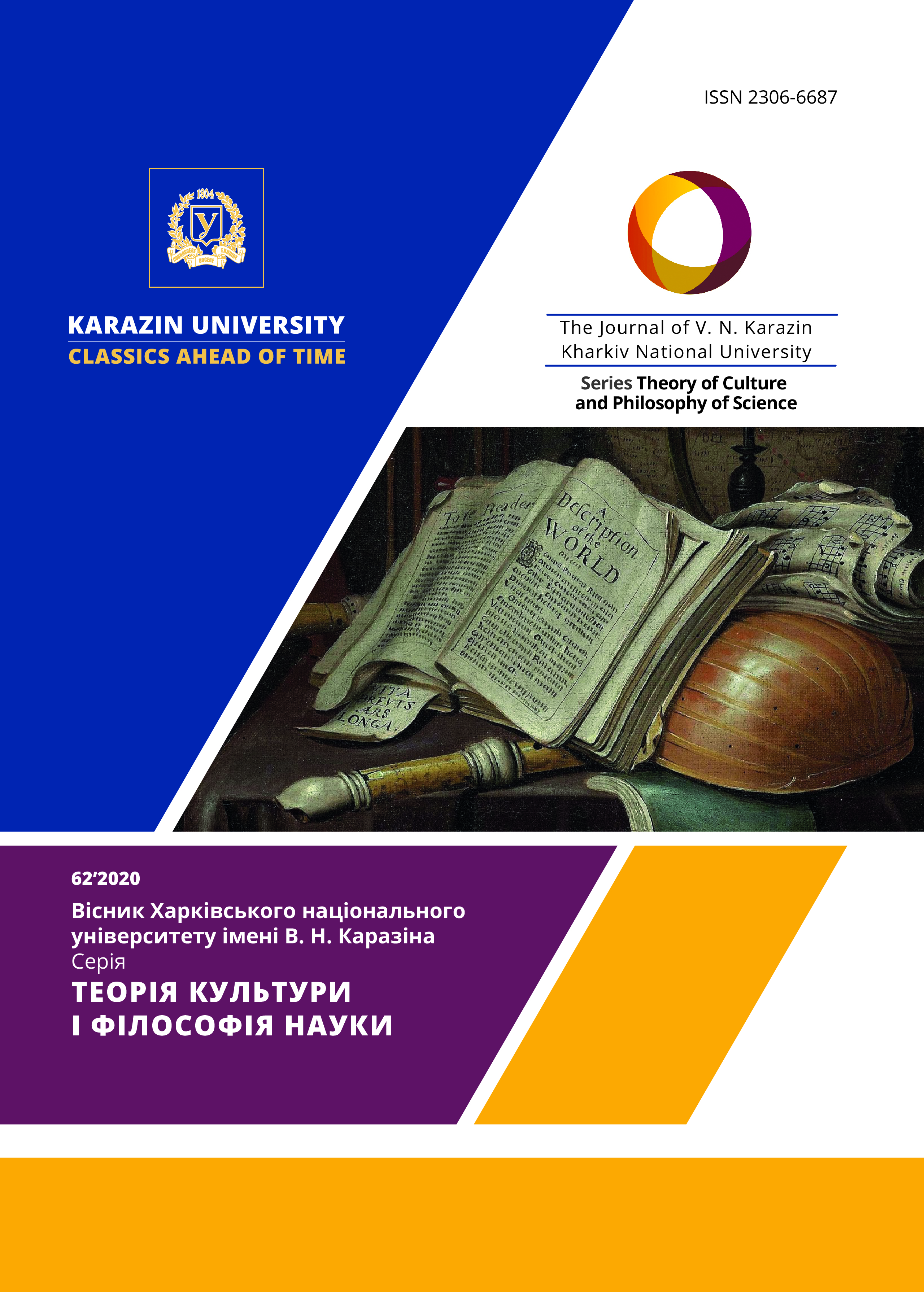СУЧАСНА УКРАЇНСЬКА СМІХОВА КУЛЬТУРА: ТРАДИЦІЇ ТА ІННОВАЦІЇ
Анотація
Сьогодні українська сміхова культура набула принципово нових рис. Ми є свідками сплеску українського сміху не тільки з точки зору популярності розважального бізнесу, але й в площині впливу відповідної культури на потестарні відносини. Також актуальними стають дискусії відносно національної автентичності конкретних сміхових практик. Відповідні явища та проблеми, на нашу думку, вимагають докладного філософського дослідження. Відтак метою цієї статті є розкриття семантики сучасної української культури через конкретизацію її інваріантних елементів та виокремлення новітніх дискурсів в площині взаємодії потестарних та сміхових практик.
Дослідження проводиться на основі окремих концептів філософії сміху А. Бергсона та методології аналізу сміхової культури М. Бахтіна з використанням ідей сучасного філософсько-культурологічного дискурсу відносно специфічних рис української сміхової культури.
Наукова новизна роботи полягає в тому, що в ній вперше виділено інваріантні практики, притаманні саме українському сміху; проаналізовано особливості його розвитку в сучасних умовах; визначено критерії, за якими можливо розрізняти достеменно українську опозиційність сміхової культури по відношенню до ідеології. По-новому витлумачуються сенс таких сучасних сміхових практик, як «прикол».
Феномен українського сміху є динамічним культурним явищем, що поєднує традиційні та інноваційні практики. В сучасному культурному просторі України присутні різноманітні дискурси сміху, які відрізняються за рівнем загальної культури, інтелекту, політичної орієнтації суб’єктів сміху. На ґрунті цих дискурсів відбувається взаємовплив карнавалізованої політики та політизованої сміхової культури. З одного боку, це свідчить про процеси демократизації суспільства, з іншого – парадоксальним чином, через сміхові практики, виражає депресивний стан суспільної свідомості.
Завантаження
Посилання
Barabash, Yu. Lessons in Ethnography. Returning to the old disputes. N.V. Gogol and the folk culture. VII Gogol’s readings. Retrived from: http://domgogolya.ru/science/researches/1370// (in Russian).
Bakhtin, M. (1990). Works of François Rabelais and the Medieval and Renaissance folk culture. M.: Hud. lit. (in Russian).
Bergson, H. An Introduction to metaphysics. Laughter. Retrived from: http://krotov.info/library/02_b/er/gson_smeh.htm (in Russian).
Garachkovska, O. (2015) ХХ ct. in Ukrainian poetry through the prism of laughter. Kyiv, Alpha-M. (in Ukrainian).
Zhulinskiy, M. The two halves of Ukrainian heart: Shevchenko and Gogol. Retrived from: https://day.kyiv.ua/uk/article/istoriya-i-ya/dvi-polovinki-ukrayinskogo-sercya-shevchenko-i-gogol. (in Ukrainian).
Kagan, М. (2002). The introductory report “Anecdote as a cultural phenomenon”. Anecdote as a cultural phenomenon: the materials of the round table. St-Petersburgh, November 16. Retrived from: http://anthropology.ru/ru/texts/kagan/anecdote_01.html. (in Russian).
Kosyuk, О.М. (2005). The laughter and travesty tele-relaxation in the context of the folk laughter culture. The Herald of L’viv national university. Series: Journalism. L'viv, Svit. V. 26, 84–92. Retrived from: http://old.journ.lnu.edu.ua/publications/visnyk26/Statti_Kosjuk.htm. (in Ukrainian).
Krasnokutsky, G. (2011). The negative Risus-factor: archetypes of the laughter culture against the ridiculousness of the lack of culture in Ukrainian politics in the first decade of the XXI ct. Δόξα: a journal in philosophy and philology. Odesa. V. 16, 175–180. Retrived from: http://doxa.onu.edu.ua/Doxa16/175-180.pdf (in Ukrainian).
Malakhov, V. (2003). “The prikol phenomenon”. Δόξα: a journal in philosophy and philology. Odesa. V. 3. Gnoseologic and anthropologic dimensions of laughter, 179-186. Retrived from: http://doxa.onu.edu.ua/Doxa3/116-120.pdf. (in Russian).
People's Poland, communism and socialism. Similar jokes and jests. Retrived from: http://prl.dowcipy.pl. (in Polish).
Stolyar, M. (2013) Laughter culture of totalitarian society: essence, forms, and action mechanisms (on the example of the Soviet cultural practices): The abstract of the thesis for the degree of Doctor in Philosophy. Kharkiv (in Ukrainian).
Stoliar, M. (2011). The Soviet laughter culture: Monograph. Kyiv, Stylus. (in Russian).




